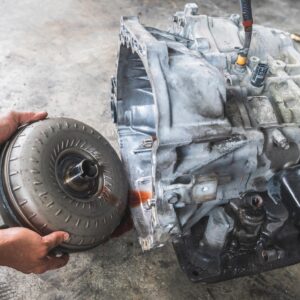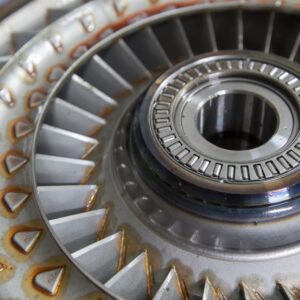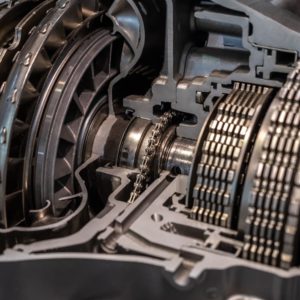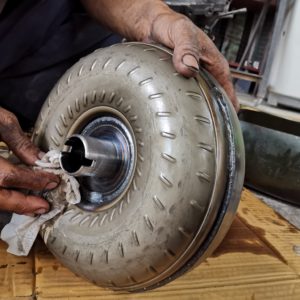When you’re putting your automatic transmission back together, then you need to pay attention to the torque converter spacing. Incorrectly reinstalling the torque converter can result in severe transmission damage.
Should There Be Space Between the Torque Converter and Flex Plate?
When the torque converter is bolted to the flex plate, there is no space between the converter and the plate.
The flex plate is bolted at the center to the crankshaft and at its outer edges to the torque converter, which swells slightly as fluid pressure is applied by the pump; lots of square inches in there, so the torque converter needs to be able to flex the plate as it expands.
Sometimes the flywheel teeth (for the starter) are on the converter and sometimes they’re on the flex plate itself. But an automatic transmission doesn’t have a flywheel, per se, like a manual transmission does.
When the torque converter is bolted to the flex plate, there is no space between the converter and the plate.
– Richard McCuistian, ASE Certified Master Automobile Technician

When you’re reinstalling the torque converter into the transmission, you should hold the “button” in the center of the torque converter while spinning the converter with your other hand. The torque converter must engage the turbine shaft, the stator support (not shown in the illustration) on the pump, and the pump gear.
Symptoms of Incorrectly Installed Torque Converter
An incorrectly installed torque converter can damage the engine’s thrust bearing. If the torque converter is pushing the flex plate and thrust bearing, the thrust bearing’s surface might not be able to maintain a sufficient oil film. This can cause the part to overheat and be destroyed, which can allow the crankshaft to move and result in severe crank damage.
Where to Get a Replacement Torque Converter for Your Vehicle
As mentioned, an incorrectly installed torque converter may affect the engine. Imagine how a malfunctioning converter may affect your vehicle’s performance. Thankfully, CarParts.com has an array of high-quality converters for you to choose from.
We take pride in the quality of our torque converters, sourcing them from trusted manufacturers in the industry to ensure top-tier performance. You can also expect fast and efficient delivery because we ship orders from strategically located warehouses across the country. This means your replacement alternator can arrive at your doorstep in as fast as two business days.
Check out our catalog, and take advantage of our best deals today!
Any information provided on this Website is for informational purposes only and is not intended to replace consultation with a professional mechanic. The accuracy and timeliness of the information may change from the time of publication.




































